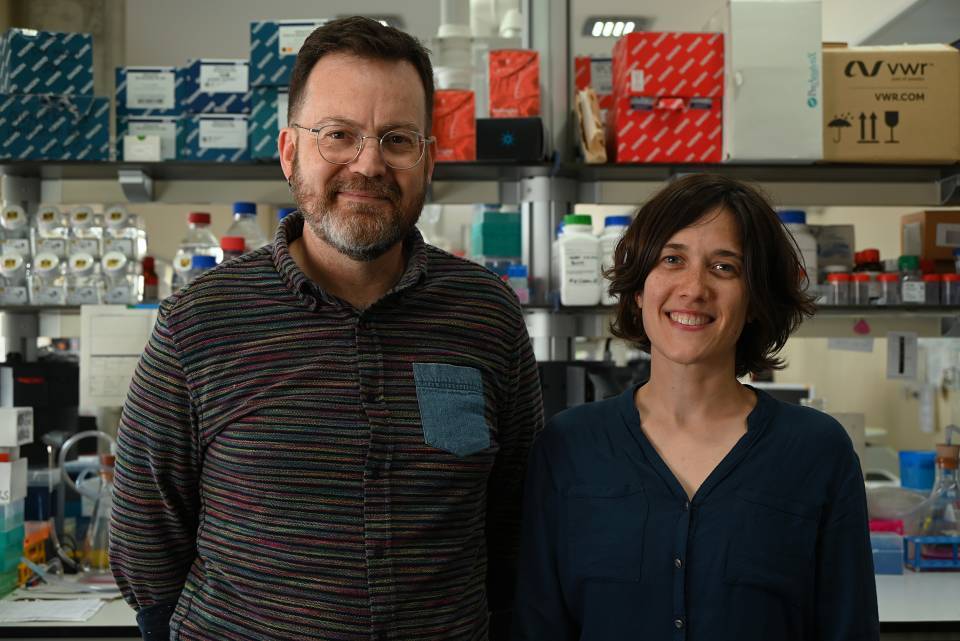- What is it?
- Causes
- Risk factors
- Symptoms
- Prevention
- Diagnosis
- Treatment
- Evolution of the disease
- Living with disease
- Research lines
- Frequently Asked Questions
Treatment of colorectal cancer
Once colorectal cancer has been diagnosed, a multidisciplinary team evaluates each case individually so they can provide the treatment that offers the best chance of curing the patient.
The team comprises all of the healthcare professionals directly involved in the diagnostic and therapeutic process, such as radiologists, nuclear medicine specialists, pathologists, radiotherapists, oncologists, digestive surgeons, liver surgeons, digestive system specialists, anaesthetists and colorectal nurses.
Once the team reach a collective decision, the doctor in charge will inform the patient and explain the treatment.
The type of treatment is determined according to the following factors:
- Patient characteristics. age, other diseases that complicate particular treatments and their functional status.
- Tumour location. right colon, left colon or rectum.
- Tumour type. RAS or BRAF gene status.
- The phase or stage of the disease (TNM staging system).
There are several therapeutic approaches to colorectal cancer that can be carried out either individually or in combination:
- Surgical treatment
- Chemotherapy and radiotherapy (systemic treatment)
- New therapies
- Palliative treatment

Surgery is the most effective treatment for many cases of colorectal cancer. The most common treatment for colorectal cancer is removal of the tumour and surrounding fat tissue, where the lymph nodes are found.
Once resected, the surgical specimen is sent for analysis by the anatomical pathology service and the results help clarify whether further treatment is required (chemotherapy or radiotherapy).
Many hospitals currently use laparoscopic techniques for this type surgery. There is no need for large incisions with this technique and so patients recover more quickly.
Laparoscopic surgery is a minimally invasive technique, meaning the operation is carried out without the need for large incisions. The technique has brought about a reduction in pain and breathing problems, improved aesthetic results and accelerated patient recovery times. Oncological results and survival outcomes are similar to those obtained following conventional surgery.
Rectal surgery is technically more complicated than colon surgery and, despite the improvements obtained through laparoscopic surgery, is still a very challenging procedure. Just a few hospitals around the world perform rectal resections by combining abdominal laparoscopy with a transanal approach. This technique allows for oncologically correct resections while avoiding the technical difficulties associated with open surgery or rectal laparoscopy and therefore reducing the number of postoperative complications.
- Complications associated with colorectal surgery
Colorectal surgery may lead to postoperative complications such as haemorrhage, a rupture in the stitched areas at both ends of the colon (anastomotic dehiscence), wound infection, etc. Such complications may require a new intervention and increase the length of the hospital stay.
An ostomy, either temporary or permanent, may be necessary during rectal cancer surgery. An ostomy (or stoma) is a surgical opening that is made in the skin to allow waste products to leave the intestines (ileostomy or colostomy). It is called a colostomy when the opening is located at one end of the colon (large intestine) and ileostomy when the opening is located at the terminal end of the ileum (the lowest part of the small intestine).
The mid/long-term effects of surgery include pain and sensitivity in the surgical area. The procedure can also cause changes in bowel movement habits which tend to disappear with time.
Removal of the rectum means some patients may experience problems such as urinary dysfunction (urinary incontinence or retention), sexual dysfunction and anorectal dysfunction (faecal incontinence, multiple bowel movements per day, faecal urgency, etc.). In most patients these problems improve as the months go by until they disappear approximately one year after surgery.

Chemotherapy. Chemotherapy is the most common treatment for colorectal cancer. It is generally administered intravenously, but in some cases it may be taken orally.
Chemotherapy inhibits the growth of cells in the process of division. It affects both tumour and healthy cells, which is what causes the symptoms associated with the treatment, known as adverse effects or side effects.
Chemotherapy can be administered as a single drug (monotherapy) or a two-drug combination (polychemotherapy). Some of the most used drugs include the fluoropyrimidines (5-fluorouracil [5-FU], capecitabine), irinotecan, oxaliplatin and TAS-102 (trifluridine/tipiracil).
The number of cycles depends on each tumour’s characteristics and stage, but patients generally receive 6–12 treatment cycles, that is about 3–6 months of treatment. Different tests are conducted throughout the treatment to evaluate its effectiveness.

Radiotherapy. Radiation therapy or radiotherapy uses high-energy X-rays to destroy cancer cells. It has different uses in colorectal cancer and can be administered alone or in combination with chemotherapy in order to reduce the size of the tumour prior to surgery (in rectal cancer) or treat colorectal cancer that has spread to areas outside the colon/rectum, such as the bones or brain.
Stage I or II colorectal cancer
It is yet to be established whether or not patients with node-negative colorectal cancer benefit from adjuvant (postoperative) chemotherapy and radiotherapy.
Stage III colorectal cancer
Adjuvant (postoperative) chemotherapy comprising the intravenous administration of two drugs (typically fluorouracil and/or capecitabine with oxaliplatin) is recommended for patients with colon cancer under the age of 70. Chemotherapy is usually administered every 2 or 3 weeks, depending on the dose, and over a period of 3–6 months. Oral fluorouracil (capecitabine) monotherapy is recommended for patients aged over 70.
Treatment for patients with localised rectal cancer includes neoadjuvant (preoperative) radio-chemotherapy. Chemotherapy can be administered via continuous intravenous infusion (5-FU) or as tablets (capecitabine) and at the same time as radiotherapy. Surgery must be performed between 6 and 8 weeks after completing the course of radio-chemotherapy. The role of adjuvant chemotherapy has not been established.
Stage IV colorectal cancer
Around 20–25% of patients with initially localised cancer will eventually present metastasis during monitoring. Furthermore, in a significant number of patients the cancer has already spread when they are first diagnosed. The main treatment objective is to relieve the symptoms associated with the disease. Chemotherapy is the treatment of choice, usually with a two-drug combination in the first and second-line treatments (fluorouracil and oxaliplatin, a combination known as FOLFOX, or fluorouracil and itinotecan, known as FOLFIRI) and TAS-102 monotherapy for third-line or subsequent treatments. Capecitabine monotherapy is also a suitable choice in patients aged over 70.
TAS-102 is a new antitumour drug that has shown to benefit patients with metastatic colorectal cancer who have progressed to two or more lines of treatment; it is currently awaiting approval from the EMA (European Medicines Agency).
- Complications associated with systemic treatment
Depending on the specific type of chemotherapy administered, each treatment will cause different side effects.
Some of the symptoms that could appear include: tiredness (asthenia), changes in dietary preferences, nausea, vomiting, hair loss, inflammation of the mouth’s mucous membrane, fever, constipation/diarrhoea, muscular pain, neurotoxicity (pain, tingling or a loss of feeling in fingers and toes), redness, pain and lesions on hands and feet, acne-like eruption and nail lesions.
The chemotherapy used to treat colorectal cancer does not usually cause alopecia (hair loss) or vomiting.
Capecitabine can cause oedema and redness on the soles of the feet and palms of the hands. It can also cause diarrhoea and, on rare occasions, mouth ulcers (mucositis). If these side effects occur, then it is important to inform your usual doctor and, if in doubt, stop taking the drug.
The combination of fluorouracil and oxaliplatin via continuous infusion (FOLFOX) can also produce of mucositis, diarrhoea and fever due to low defences. This combination also tends to cause moderate tiredness, especially in the first few days after treatment. Oxaliplatin can provoke neurotoxicity (numbness in the hands and feet), particularly after 8–12 treatment cycles. This side effect may persist even after the end of treatment.
The other chemotherapy combination (FOLFIRI) can produce diarrhoea, abdominal pain and a greater degree of alopecia than FOLFOX, but it does not cause neurotoxicity.
Meanwhile, bevacizumab and aflibercept are anti-angiogenic drugs that affect the blood vessels supplying the tumour and can result in increased blood pressure, bleeding or blood clotting problems. Whereas panitumumab and cetuximab act on a membrane receptor called EGFR (epidermal growth factor receptor) and tend to cause varying degrees of skin eruption.
Regorafenib produces severe fatigue, increases blood pressure and affects the skin on the hands and feet; redness, pain and wounds.
TAS-102 is fairly well tolerated and the only side effects worth mentioning are anaemia, low defences and reduced platelet counts.
There are currently five biological drugs approved for use in colorectal cancer with metastases (stage IV):
- Anti-EGFR treatments (cetuximab and panitumumab) are administered intravenously, used in combination with chemotherapy or alone in monotherapy, and are only effective in patients with non-mutated RAS genes (KRAS and NRAS), also known as native or wild-type RAS.
- Anti-angiogenic treatments (bevacizumab and aflibercept) are also intravenous therapies and are indicated in combination with chemotherapy for patients with metastasis.
- Regorafenib, an oral drug that inhibits tumour growth pathways, is approved as a monotherapy for third-line or subsequent treatments but it induces significant side effects and so new schedules/doses are being studied to improve the toxicity profile.
Personalised treatment with anti-EGFR antibodies
Cetuximab and panitumumab are monoclonal antibodies that target receptors located on the surface of epidermal growth factor cells (EGFR). These receptors are involved in tumour cell survival and growth. Anti-EGFR antibody therapy is only indicated in patients with wild-type RAS colorectal cancer (with no mutations in their RAS genes) because it is only beneficial in these cases. Contrastingly, anti-EGFR therapy is not indicated for patients with RAS mutated colorectal cancer as it does not offer any benefit and could even be harmful. Anti-EGFR therapy in patients with wild-type RAS colorectal cancer provides a significant clinical benefit as it increases the likelihood of a response, improves control over the disease and increases patient survival.
Substantiated information by:




Published: 20 February 2018
Updated: 20 February 2018
Subscribe
Receive the latest updates related to this content.
Thank you for subscribing!
If this is the first time you subscribe you will receive a confirmation email, check your inbox


